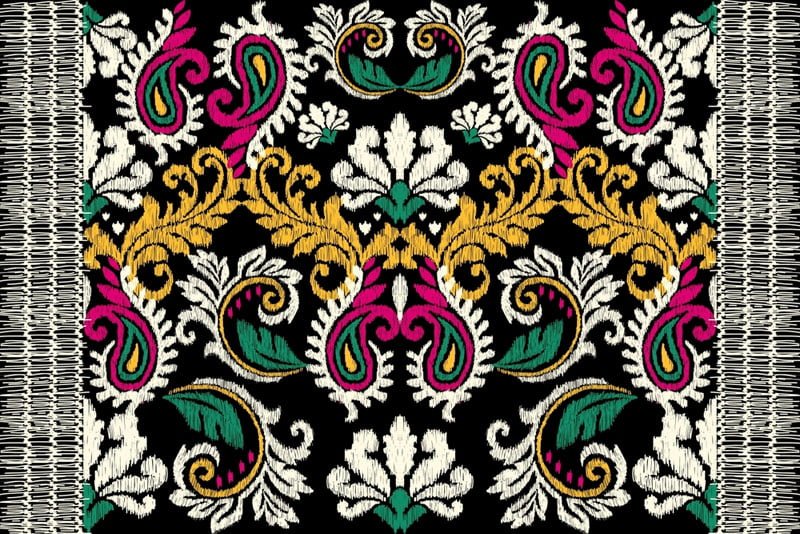Embroidery shawls, with their intricate designs and delicate fabric, are more than just accessories; they are a testament to traditional craftsmanship and art. Ensuring their longevity requires knowledge and a gentle touch, making understanding their proper care paramount. This guide aims to illuminate the best practices for maintaining the beauty and integrity of these handcrafted treasures.
Understanding Your Embroidery Shawl
Embroidery shawls come in many styles, each with its unique blend of materials and techniques. Common materials include silk, Wool, and pashmina, celebrated for their texture and elegance. Recognizing the type and fabric of your shawl is the first step toward adopting appropriate care methods.
The Do’s of Embroidery Shawl Care

- Reading and Following Care Labels: Always consult the care label for specific instructions tailored to your shawl’s needs.
- Hand Washing Techniques: Lukewarm water and a mild detergent can do wonders. Gently swish the shawl in the water without rubbing or stretching the fabric.
- Proper Drying Methods: Lay the shawl flat on a clean towel, rolling it up to absorb excess water, then air-dry away from direct sunlight.
- Ironing Tips for Delicate Fabrics: Use a pressing cloth and set your iron to a low heat setting to avoid damaging the fibers.
The Don’ts of Embroidery Shawl Care
- Avoiding Harsh Chemicals: Bleach and strong detergents can wreak havoc on delicate threads and dyes.
- Why Not to Wring or Twist: Such actions can distort the shape and damage the embroidery.
- The Dangers of High Heat: High temperatures can shrink or misshape the fabric, diminishing its beauty.
Storage Solutions
Proper storage is crucial for preserving your shawl’s condition. Opt for cool, dry places and use acid-free tissue paper to avoid creases. Cedar blocks can deter moths, protecting your shawl from unwanted damage.
Repairing Your Embroidery Shawl
Early detection of wear or damage can save your shawl. For significant repairs, please consult a textile conservation professional to restore its original glory.
Embellishment Care
Delicate beadwork and sequins require gentle handling. Secure loose threads from the back to prevent unraveling without compromising the design.
Seasonal Care Tips
Adjust your care routine with the seasons. Summer calls for breathable storage, while winter demands careful protection from the elements.
Traveling With Your Shawl
When traveling, fold your shawl with tissue paper to prevent wrinkles and place it in a breathable bag. This precaution keeps it pristine and ready to wear upon arrival.
The Importance of Professional Cleaning
Some situations call for the expertise of a professional cleaner, especially when dealing with stubborn stains or when the shawl is made from particularly sensitive materials.
DIY Cleaning Solutions
For mild cleaning at home, opt for gentle soaps and test any homemade solutions on a small, inconspicuous area first to ensure colorfastness.
Understanding Fabric Types
Each material, from the sheen of silk to the warmth of Wool and the luxury of pashmina, demands a tailored approach to care, emphasizing the need to adjust techniques accordingly.
- Silk shawls, prized for their luster and smooth texture, demand a gentle hand, avoiding water temperatures that could cause the fibers to tighten and lose their sheen.
- With its resilience and warmth, Wool requires protection from high heat and agitation that could lead to felting.
- Pashmina, the embodiment of luxury, combines warmth and softness but is susceptible to damage from rough handling and harsh chemicals.
Color Preservation
Color preservation is critical in maintaining the vibrant hues that give embroidery shawls their visual appeal. Exposure to sunlight can be detrimental, leading to the fading of vibrant dyes. Utilizing color-safe detergents and avoiding direct sunlight during drying are pivotal steps in ensuring that the colors remain as vivid as the day the shawl was acquired.
Dealing With Pilling
The challenge of Dealing With Pilling is a testament to the shawl’s life and usage. While pilling can detract from the aesthetic appeal, addressing it carefully can restore the shawl’s smooth texture. A fabric comb, used gently, can remove pills without compromising the integrity of the delicate threads beneath.
The Role of Accessories
Shawl pins and brooches can add flair, but use them cautiously to avoid snagging the fabric or damaging the embroidery.
Enhancing Longevity
Regular, mindful care keeps your shawl looking its best and honors the artistry and history it represents.
Cultural Significance
Embroidery shawls are imbued with cultural significance, embodying traditional techniques passed down through generations. Their care is a way to preserve and respect this heritage.
Fashion and Functionality
Integrating embroidery shawls into your wardrobe offers a blend of fashion and functionality, providing warmth and style in equal measure.
Environmental Considerations
Eco-friendly care practices benefit your shawl and the environment, promoting sustainability in fashion care.
Conclusion
The care of an embroidery shawl involves a balance of gentle handling, proper techniques, and an appreciation for the craftsmanship it represents. By adhering to these do’s and don’ts, you can ensure that your shawl remains a cherished accessory for years, bridging the gap between traditional art and contemporary fashion.



